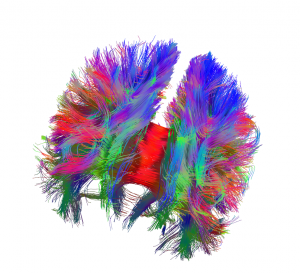Before determining how we acquire spatial knowledge, it is important to understand what exactly is being acquired. We found evidence that the underlying structure of spatial knowledge is consistent with a labeled graph, which connects locations (nodes) along paths (edges) in the environment. In contrast to pure route knowledge, we found the most frequent routes and detours had not been traveled during learning. Contrary to purely topological knowledge, navigators traveled the shortest metric distance to a goal, rather than topologically equivalent but longer paths. Thus, this topological structure of spatial knowledge connects locations without relying on a globally-consistent map-like structure, although it does include coarse local metric information.

A network composed of nodes and edges.
This research is sponsored by the National Science Foundation (PAC and GSS)
Selected Publications:
Chrastil, E.R., & Warren, W.H. (2015). Active and passive spatial learning in human navigation: Acquisition of graph knowledge. Journal of Experimental Psychology: Learning, Memory, & Cognition, 41(4), 1162-1178.
Chrastil, E.R., & Warren, W.H. (2014). From cognitive maps to cognitive graphs. PLOS ONE, 9(11), e112544.
